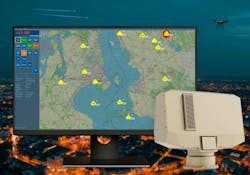Weibel chooses radar control and display software from Cambridge Pixel for XENTA surveillance radar
CAMBRIDGE, England – Radar designers at Weibel Scientific A/S in Lillerød, Denmark, needed a radar control and display system for the Weibel XENTA surveillance radar. They found a solution from Cambridge Pixel in Cambridge, England.
The XENTA radar is a modern 3D radar with continuous target illumination and synthetic receiver beamforming. Variants are available for Short Range Air Defense (XENTA-M) and Counter-UAS (XENTA-C).
Radar control and display
Weibel experts are choosing Cambridge Pixel for a state-of-the-art radar control and display system for Cambridge Pixel's proven technical expertise, rapid development capabilities, and adaptability to complex project requirements, company officials say.
"The end-user wanted a mature radar control software that needed minimum adaptations while fulfilling all control and display requirements of the XENTA radar, explains Henrik Olsson, product line director at Weibel. "Cambridge Pixel had both the software and the expertise that we were looking for, and could provide the flexibility and responsiveness we needed to support a successful project delivery."
Wiebel asked Cambridge to develop multi-console software for the XENTA radar. The software includes advanced radar display capabilities with mapping and recording, radar control functions, track management and prioritization, and track filtering for integration with third-party command-and-control (C2) systems.
The solution is built on Cambridge Pixel's library of radar processing software. Key components of the project included a bespoke radar controller tailored to the XENTA radar, improved MIL-STD-2525 overlay graphics, and support for dual-redundant operator consoles.
Air Situation Display
The project uses Cambridge Pixel's Air Situation Display (ASD-100), SPx Track Manager for track filtering and format conversion, Threat Processor software for prioritization, and RDR Data Recorder. The SPx Monitor provided monitoring and resilience.
For more information contact Cambridge Pixel online at https://cambridgepixel.com, or Weibel Scientific at www.weibelradars.com.
